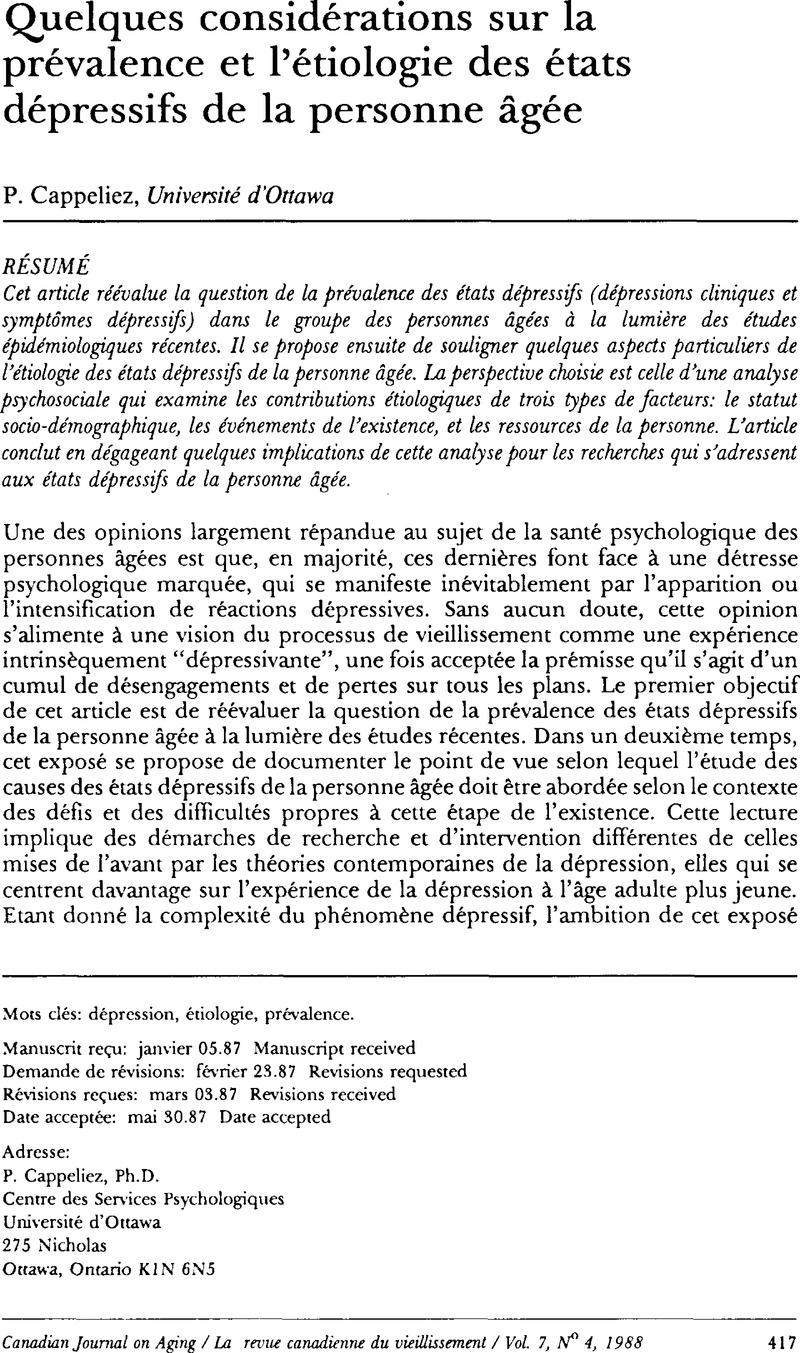Crossref Citations
This article has been cited by the following publications. This list is generated based on data provided by Crossref.
Bourque, Paul
Blanchard, Louis
Sadéghi, Mohammad-Réza
and
Arseneault, Anne-Marie
1991.
État de santé, consommation de médicaments et symptômes de la dépression chez les personnes âgées.
Canadian Journal on Aging / La Revue canadienne du vieillissement,
Vol. 10,
Issue. 4,
p.
309.
Landreville, Philippe
and
Cappeliez, Philippe
1992.
Soutien social et symptômes dépressifs au sein des personnes âgées.
Canadian Journal on Aging / La Revue canadienne du vieillissement,
Vol. 11,
Issue. 4,
p.
322.
Bachelor, Alexandra
1996.
Specificity and Persistence of Cognitive-Dynamic Characteristics in Elderly Depression.
Canadian Journal on Aging / La Revue canadienne du vieillissement,
Vol. 15,
Issue. 2,
p.
198.



